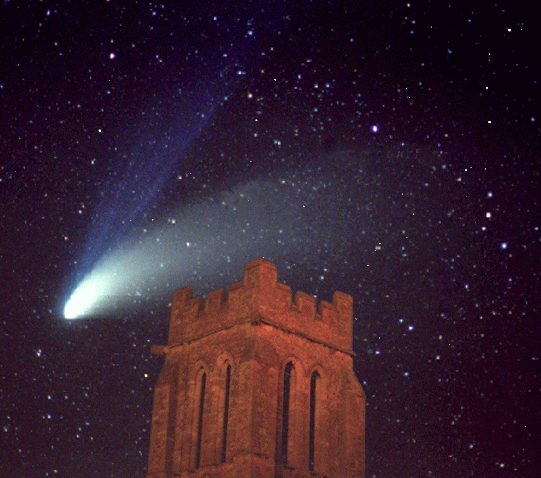
The Two Tails of Comet Hale-Bopp
The picture above was taken by Malcolm Ellis in Bury, England. It shows the
two tails of Hale-Bopp clearly separated in the plane of the sky. The
distinctive blue color, straight and rayed appearance of the ion tail can
be seen (zoom the picture if the rays are not obvious). The blue color
results primarily from the CO+ ion, which is here swept into a tail by
the solar wind. Hale-Bopp released CO in copious amounts: about 20 - 30% of
the gas released was CO (most of the rest was water). The dust tail is white,
diffuse and curved. It consists
of small dust grains pushed back from the nucleus and coma by solar radiation
pressure. Typical dust grains have sizes of about a micron (0.001 mm).
At the time this picture was taken (1997 April 4), Hale-Bopp was producing
about 200 tonnes per second in both gas and dust.
The coma is the small, roughly spherical region buried in the saturated head
of the comet. It contains a lot of
structure from the anisotropic emission from the
underlying nucleus.
Last updated August 2009 by David Jewitt